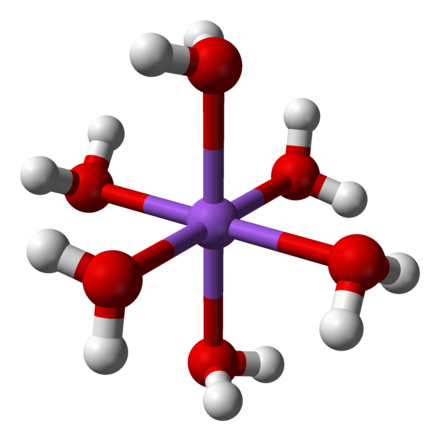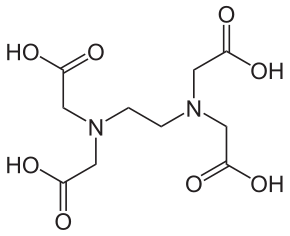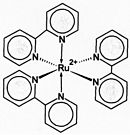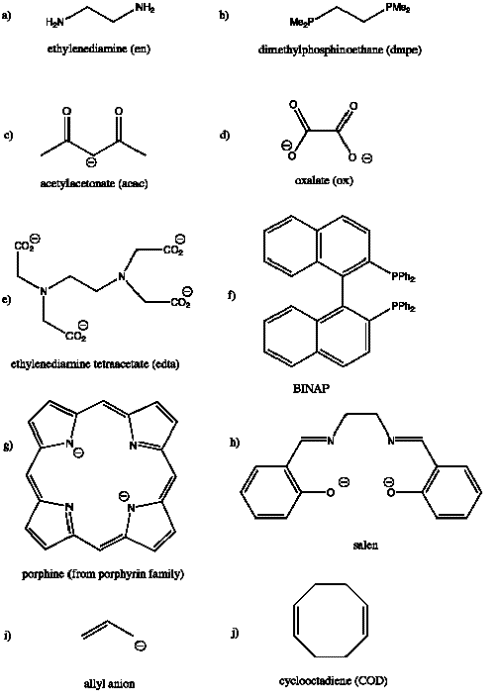3.7: Ligands
- Page ID
- 83491
\( \newcommand{\vecs}[1]{\overset { \scriptstyle \rightharpoonup} {\mathbf{#1}} } \)
\( \newcommand{\vecd}[1]{\overset{-\!-\!\rightharpoonup}{\vphantom{a}\smash {#1}}} \)
\( \newcommand{\id}{\mathrm{id}}\) \( \newcommand{\Span}{\mathrm{span}}\)
( \newcommand{\kernel}{\mathrm{null}\,}\) \( \newcommand{\range}{\mathrm{range}\,}\)
\( \newcommand{\RealPart}{\mathrm{Re}}\) \( \newcommand{\ImaginaryPart}{\mathrm{Im}}\)
\( \newcommand{\Argument}{\mathrm{Arg}}\) \( \newcommand{\norm}[1]{\| #1 \|}\)
\( \newcommand{\inner}[2]{\langle #1, #2 \rangle}\)
\( \newcommand{\Span}{\mathrm{span}}\)
\( \newcommand{\id}{\mathrm{id}}\)
\( \newcommand{\Span}{\mathrm{span}}\)
\( \newcommand{\kernel}{\mathrm{null}\,}\)
\( \newcommand{\range}{\mathrm{range}\,}\)
\( \newcommand{\RealPart}{\mathrm{Re}}\)
\( \newcommand{\ImaginaryPart}{\mathrm{Im}}\)
\( \newcommand{\Argument}{\mathrm{Arg}}\)
\( \newcommand{\norm}[1]{\| #1 \|}\)
\( \newcommand{\inner}[2]{\langle #1, #2 \rangle}\)
\( \newcommand{\Span}{\mathrm{span}}\) \( \newcommand{\AA}{\unicode[.8,0]{x212B}}\)
\( \newcommand{\vectorA}[1]{\vec{#1}} % arrow\)
\( \newcommand{\vectorAt}[1]{\vec{\text{#1}}} % arrow\)
\( \newcommand{\vectorB}[1]{\overset { \scriptstyle \rightharpoonup} {\mathbf{#1}} } \)
\( \newcommand{\vectorC}[1]{\textbf{#1}} \)
\( \newcommand{\vectorD}[1]{\overrightarrow{#1}} \)
\( \newcommand{\vectorDt}[1]{\overrightarrow{\text{#1}}} \)
\( \newcommand{\vectE}[1]{\overset{-\!-\!\rightharpoonup}{\vphantom{a}\smash{\mathbf {#1}}}} \)
\( \newcommand{\vecs}[1]{\overset { \scriptstyle \rightharpoonup} {\mathbf{#1}} } \)
\( \newcommand{\vecd}[1]{\overset{-\!-\!\rightharpoonup}{\vphantom{a}\smash {#1}}} \)
\(\newcommand{\avec}{\mathbf a}\) \(\newcommand{\bvec}{\mathbf b}\) \(\newcommand{\cvec}{\mathbf c}\) \(\newcommand{\dvec}{\mathbf d}\) \(\newcommand{\dtil}{\widetilde{\mathbf d}}\) \(\newcommand{\evec}{\mathbf e}\) \(\newcommand{\fvec}{\mathbf f}\) \(\newcommand{\nvec}{\mathbf n}\) \(\newcommand{\pvec}{\mathbf p}\) \(\newcommand{\qvec}{\mathbf q}\) \(\newcommand{\svec}{\mathbf s}\) \(\newcommand{\tvec}{\mathbf t}\) \(\newcommand{\uvec}{\mathbf u}\) \(\newcommand{\vvec}{\mathbf v}\) \(\newcommand{\wvec}{\mathbf w}\) \(\newcommand{\xvec}{\mathbf x}\) \(\newcommand{\yvec}{\mathbf y}\) \(\newcommand{\zvec}{\mathbf z}\) \(\newcommand{\rvec}{\mathbf r}\) \(\newcommand{\mvec}{\mathbf m}\) \(\newcommand{\zerovec}{\mathbf 0}\) \(\newcommand{\onevec}{\mathbf 1}\) \(\newcommand{\real}{\mathbb R}\) \(\newcommand{\twovec}[2]{\left[\begin{array}{r}#1 \\ #2 \end{array}\right]}\) \(\newcommand{\ctwovec}[2]{\left[\begin{array}{c}#1 \\ #2 \end{array}\right]}\) \(\newcommand{\threevec}[3]{\left[\begin{array}{r}#1 \\ #2 \\ #3 \end{array}\right]}\) \(\newcommand{\cthreevec}[3]{\left[\begin{array}{c}#1 \\ #2 \\ #3 \end{array}\right]}\) \(\newcommand{\fourvec}[4]{\left[\begin{array}{r}#1 \\ #2 \\ #3 \\ #4 \end{array}\right]}\) \(\newcommand{\cfourvec}[4]{\left[\begin{array}{c}#1 \\ #2 \\ #3 \\ #4 \end{array}\right]}\) \(\newcommand{\fivevec}[5]{\left[\begin{array}{r}#1 \\ #2 \\ #3 \\ #4 \\ #5 \\ \end{array}\right]}\) \(\newcommand{\cfivevec}[5]{\left[\begin{array}{c}#1 \\ #2 \\ #3 \\ #4 \\ #5 \\ \end{array}\right]}\) \(\newcommand{\mattwo}[4]{\left[\begin{array}{rr}#1 \amp #2 \\ #3 \amp #4 \\ \end{array}\right]}\) \(\newcommand{\laspan}[1]{\text{Span}\{#1\}}\) \(\newcommand{\bcal}{\cal B}\) \(\newcommand{\ccal}{\cal C}\) \(\newcommand{\scal}{\cal S}\) \(\newcommand{\wcal}{\cal W}\) \(\newcommand{\ecal}{\cal E}\) \(\newcommand{\coords}[2]{\left\{#1\right\}_{#2}}\) \(\newcommand{\gray}[1]{\color{gray}{#1}}\) \(\newcommand{\lgray}[1]{\color{lightgray}{#1}}\) \(\newcommand{\rank}{\operatorname{rank}}\) \(\newcommand{\row}{\text{Row}}\) \(\newcommand{\col}{\text{Col}}\) \(\renewcommand{\row}{\text{Row}}\) \(\newcommand{\nul}{\text{Nul}}\) \(\newcommand{\var}{\text{Var}}\) \(\newcommand{\corr}{\text{corr}}\) \(\newcommand{\len}[1]{\left|#1\right|}\) \(\newcommand{\bbar}{\overline{\bvec}}\) \(\newcommand{\bhat}{\widehat{\bvec}}\) \(\newcommand{\bperp}{\bvec^\perp}\) \(\newcommand{\xhat}{\widehat{\xvec}}\) \(\newcommand{\vhat}{\widehat{\vvec}}\) \(\newcommand{\uhat}{\widehat{\uvec}}\) \(\newcommand{\what}{\widehat{\wvec}}\) \(\newcommand{\Sighat}{\widehat{\Sigma}}\) \(\newcommand{\lt}{<}\) \(\newcommand{\gt}{>}\) \(\newcommand{\amp}{&}\) \(\definecolor{fillinmathshade}{gray}{0.9}\)A metal ion in solution does not exist in isolation, but in combination with ligands (such as solvent molecules or simple ions) or chelating groups, giving rise to complex ions or coordination compounds. These complexes contain a central atom or ion, often a transition metal, and a cluster of ions or neutral molecules surrounding it. Ligands are ions or neutral molecules that bond to a central metal atom or ion. Ligands act as Lewis bases (electron pair donors), and the central atom acts as a Lewis acid (electron pair acceptor). Ligands have at least one donor atom with an electron pair used to form covalent bonds with the central atom.
The term ligand come from the latin word ligare, which meaning to bind) was first used by Alfred Stock in 1916 in relation to silicon chemistry. Ligands can be anions, cations, or neutral molecules. Ligands can be further characterized as monodentate, bidentate, tridentate etc. where the concept of teeth (dent) is introduced, hence the idea of bite angle etc. A monodentate ligand has only one donor atom used to bond to the central metal atom or ion.
Monodentate Ligands
The term "monodentate" can be translated as "one tooth," referring to the ligand binding to the center through only one atom. Some examples of monodentate ligands are: chloride ions (referred to as chloro when it is a ligand), water (referred to as aqua when it is a ligand), hydroxide ions (referred to as hydroxo when it is a ligand), and ammonia (referred to as ammine when it is a ligand).

Figure \(\PageIndex{1}\): Central atom with six monodentate ligands attached. (Image courtesy of Wikimedia Commons.)
Bidentate Ligands
Bidentate ligands have two donor atoms which allow them to bind to a central metal atom or ion at two points. Common examples of bidentate ligands are ethylenediamine (en), and the oxalate ion (ox). Shown below is a diagram of ethylenediamine: the nitrogen (blue) atoms on the edges each have two free electrons that can be used to bond to a central metal atom or ion.


Figure \(\PageIndex{2}\): Ethylenediamine (en) is an example of a bidentate ligand. (Image courtesy of Wikimedia Commons.). Ethylenediamine (en) is a bidentate ligand that forms a five-membered ring in coordinating to a metal ion M
Polydentate Ligands
Polydentate ligands range in the number of atoms used to bond to a central metal atom or ion. EDTA, a hexadentate ligand, is an example of a polydentate ligand that has six donor atoms with electron pairs that can be used to bond to a central metal atom or ion.


Figure \(\PageIndex{3}\): Ethylenediaminetetraaceticacid acid (EDTA) is a hexadentate ligand and can bind a Metal via multiple "teeth" (left) Unbound EDTA ion and (right) EDTA bound to a generic transition metal. (Images courtesy of Wikimedia Commons.)
Unlike polydentate ligands, ambidentate ligands can attach to the central atom in two places. A good example of this is thiocyanate, \(SCN^−\), which can attach at either the sulfur atom or the nitrogen atom.
Chelation
Chelation is a process in which a polydentate ligand bonds to a metal ion, forming a ring. The complex produced by this process is called a chelate, and the polydentate ligand is referred to as a chelating agent. The term chelate was first applied in 1920 by Sir Gilbert T. Morgan and H.D.K. Drew, who stated: "The adjective chelate, derived from the great claw or chela (chely- Greek) of the lobster or other crustaceans, is suggested for the caliperlike groups which function as two associating units and fasten to the central atom so as to produce heterocyclic rings." As the name implies, chelating ligands have high affinity for metal ions relative to ligands with only one binding group (which are called monodentate = "single tooth") ligands. Both Ethylenediamine (Figure \(\PageIndex{2}\)) and Ethylenediaminetetraaceticacid acid (Figure \(\PageIndex{3}\)) are examples of chelating agents, but many others are commonly found in the inorganic laboratory.
The Chelate Effect
The chelate effect is the enhanced affinity of chelating ligands for a metal ion compared to the affinity of a collection of similar nonchelating (monodentate) ligands for the same metal.
The macrocyclic effect follows the same principle as the chelate effect, but the effect is further enhanced by the cyclic conformation of the ligand. Macrocyclic ligands are not only multi-dentate, but because they are covalently constrained to their cyclic form, they allow less conformational freedom. The ligand is said to be "pre-organized" for binding, and there is little entropy penalty for wrapping it around the metal ion. For example heme b is a tetradentate cyclic ligand which is strongly complexes transition metal ions, including (in biological systems) Fe+2.


Figure \(\PageIndex{4}\): (left) A free, unbound porphorin ligand and (right) Heme b macrocyclic ligand that binds iron in hemoglobin
Some other common chelating and cyclic ligands are shown below:
- Acetylacetonate (acac-, top) is an anionic bidentate ligand that coordinates metal ions through two oxygen atoms. Acac- is a hard base so it prefers hard acid cations. With divalent metal ions, acac-forms neutral, volatile complexes such as Cu(acac)2 and Mo(acac)2 that are useful for chemical vapor deposition (CVD) of metal thin films.

- 2,2'-Bipyridine 2,2'-Bipyridine (Figure \(\PageIndex{5}\): left) and related bidentate ligands such as 1,10-phenanthroline form propeller-shaped complexes with metals such as Ru2+. The [Ru(bpy)3]2+ complex is photoluminescent and can also undergo photoredox reactions, making it an interesting compound for both photocatalysis and artificial photosynthesis.
- Crown ethers such as 18-crown-6 2,2'-Bipyridine (Figure \(\PageIndex{5}\): center) are cyclic hard bases that can complex alkali metal cations. Crowns can selectively bind Li+, Na+, or K+ depending on the number of ethylene oxide units in the ring.
- The chelating properties of crown ethers are mimetic of the natural antibiotic valinomycin ( 2,2'-Bipyridine (Figure \(\PageIndex{5}\): right), which selectively transports K+ ions across bacterial cell membranes, killing the bacterium by dissipating its membrane potential. Like crown ethers, valinomycin is a cyclic hard base.



Figure \(\PageIndex{5}\): (let) 2,2'-Bipyridine, (center) 18-crown-6 2,2'-Bipyridine (right) valinomycin
References
- Petrucci, Harwood, Herring, Madura. General Chemistry Principles & Modern Applications. Prentice Hall. New Jersey, 2007
- Cox, Tony. (2004). Instant notes in inorganic chemistry. Oxford, UK: Taylor & Francis.
- Libraries, Association, Robert Williams, and J. Silva. Bringing chemistry to life. Oxford University Press, USA, 1999. Print.
- Moeller, Therald, Douville, Judith, & Libraries, Association. (1988). Inorganic Chemistry: A Modern Introduction. Amer Library Assn.
- Bowker, R., Warmus, Mieczysław, Muzzy, Adrienne, LOCALIZADO, AUTOR, Hopkinson, Barbara, Saur, K, Izod, Irene, Hopkinson, Barbara, Saur, K, Books, K, & Company, K. (1994). Inorganic Chemistry Concepts. K G Saur Verlag Gmbh & Co.
- Porterfield, William. (1984). Inorganic chemistry. Addison Wesley Publishing Company.
Contributors
- Harjeet Bassi (UCD)
Adapted from the Wikibook constructed by Chemistry 310 students at Penn State University.


